Six species at risk that the unsung heroes of Parks Canada are striving to save.

A PARKS CANADA scientist laces up his boots, throws on a 23 kilogram pack and heads for the subalpine of the Rockies in search of a whitebark pine tree that could help save the species. Meanwhile, across the country in Prince Edward Island National Park, a resource conservation officer rises at the crack of dawn, grabs her binoculars and watches over a small group of critically endangered piping plovers for hours. Pulling species at risk back from the brink is neither a nine-to-five job nor short-term. Many such programs require years, if not decades, of oversight. And for many Parks Canada scientists and staff, it’s a critical — if little-known — part of their work.
Indeed, it’s the kind of commitment necessary to help Canada meet the targets of the 1992 Convention on Biological Diversity. In particular, new goals formulated at the 10th meeting of convention signatories in Aichi Prefecture, Japan, in October 2010 mandate Canada to meet the objectives established in recovery strategies or management plans for each species at risk by 2020. There’s a lot of work to be done, but the efforts undertaken on the following six species-at-risk conservation projects in Canada’s national park system show the promise of results on the long roads to recovery.
WHITEBARK PINE
Seven mountain national parks, Alberta and British Columbia
The view from the top of a 20-metre-tall whitebark pine tree is hard won, but worth it. After donning a harness and ropes, Jed Cochrane, a Parks Canada fire and vegetation specialist, scales the soft bark and reaches the tree’s crown covered in sap, his arms bleeding from a hundred pine needle nicks. After securing himself, he takes a moment to stare out across the Ice River Valley in British Columbia’s Yoho National Park.
Diese Geschichte stammt aus der November/December 2018-Ausgabe von Canadian Geographic.
Starten Sie Ihre 7-tägige kostenlose Testversion von Magzter GOLD, um auf Tausende kuratierte Premium-Storys sowie über 8.000 Zeitschriften und Zeitungen zuzugreifen.
Bereits Abonnent ? Anmelden
Diese Geschichte stammt aus der November/December 2018-Ausgabe von Canadian Geographic.
Starten Sie Ihre 7-tägige kostenlose Testversion von Magzter GOLD, um auf Tausende kuratierte Premium-Storys sowie über 8.000 Zeitschriften und Zeitungen zuzugreifen.
Bereits Abonnent? Anmelden
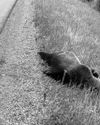
ANIMAL XING
THIS PAST SUMMER AN AMBITIOUS WILDLIFE UNDER/OVERPASS SYSTEM BROKE GROUND IN B.C. ON A DEADLY STRETCH OF HIGHWAY JUST WEST OF THE ALBERTA BORDER. HERE’S HOW IT HAPPENED.
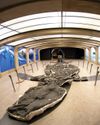
Unearthing a giant
Almost 30 years ago, paleontologist Elizabeth “Betsy” Nicholls made a discovery of colossal proportions
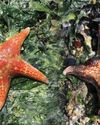
WE DID THIS
AS THE IMPACTS OF GLOBAL WARMING BECOME INCREASINGLY EVIDENT, THE CONNECTIONS TO BIODIVERSITY LOSS ARE HARD TO IGNORE. CAN THIS FALL’S TWO KEY INTERNATIONAL CONFERENCES POINT US TO A NATURE-POSITIVE FUTURE?
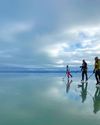
The COOLEST COUNTRY
“The coolest country” celebrates the wonders of winter with an all-Canadian theme. The 20-page travel planner includes a bucket list from travel writer Robin Esrock, steamy spa ideas, ice fishing destinations, festival fun, northern itineraries and more!
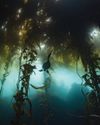
KEEPER of the SEA
FROM BEING LABELLED DEVIL’S APRON BY FRUSTRATED FISHERMEN TO BEING LAUDED AS A SUSTAINABLE FOOD SOLUTION: HOW KELP’S POTENTIAL IS BEING REALIZED, JUST AS SCIENTISTS LEARN IT’S DECLINING
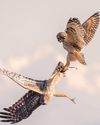
WILD THINGS
WILD CANADIAN GEOGRAPHIC PRESENTS THE WINNERS OF ITS ANNUAL CANADIAN WILDLIFE PHOTOGRAPHY OF THE YEAR COMPETITION

AN EMPTY LANDSCAPE
AFTER MORE THAN A MILLION YEARS ON EARTH, CARIBOU ARE UNDER THREAT OF GLOBAL EXTINCTION. THE PRECIPITOUS DECLINE OF THE ONCE MIGHTY HERDS IS A TRAGEDY THAT IS HARD TO WATCH — AND EVEN HARDER TO REVERSE.
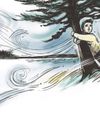
NORTHERN EXPOSURE
BON INTO A CARIBOU-HUNTING CREE FAMILY IN NORTHERN MANITOBA, ACCLAIMED PLAYWRIGHT AND NOVELIST. TOMSON HIGHWAYS PAYS TRIBUTE TO THE MAGICAL WORLD OF HIS CHILDHOOD IN PERMANENT ASTONISHMENT

INTO THE ARCTIC
CANADIAN PAINTER AND FILMMAKER CORY TRÉPANIER EXPLORES THE SUBLIME AND RAPIDLY CHANGING CANADIAN ARCTIC

Under the ice
Until the last decade, we knew little about what lay beneath the Arctic ice. Now scientists and explorers are shedding light on this vanishing world.